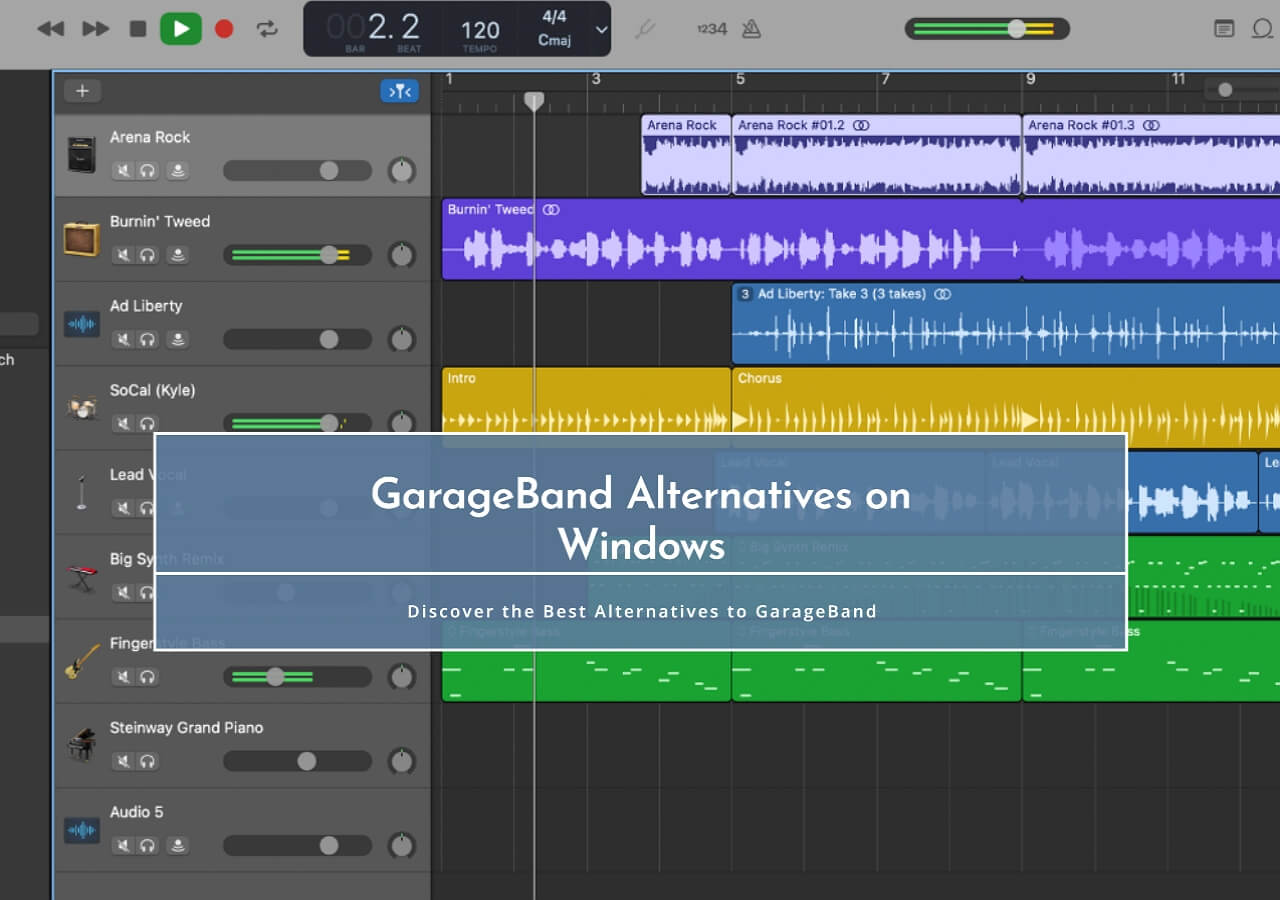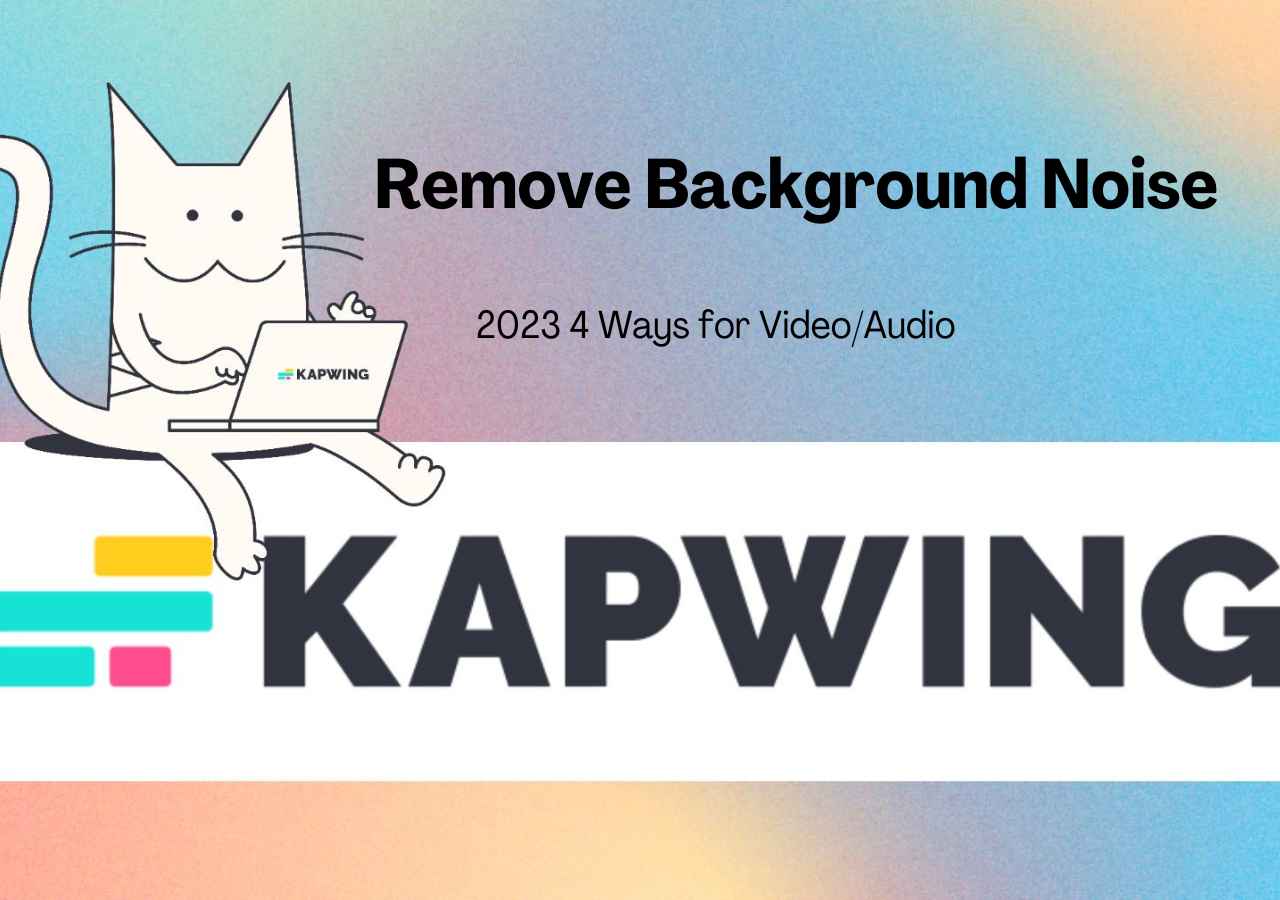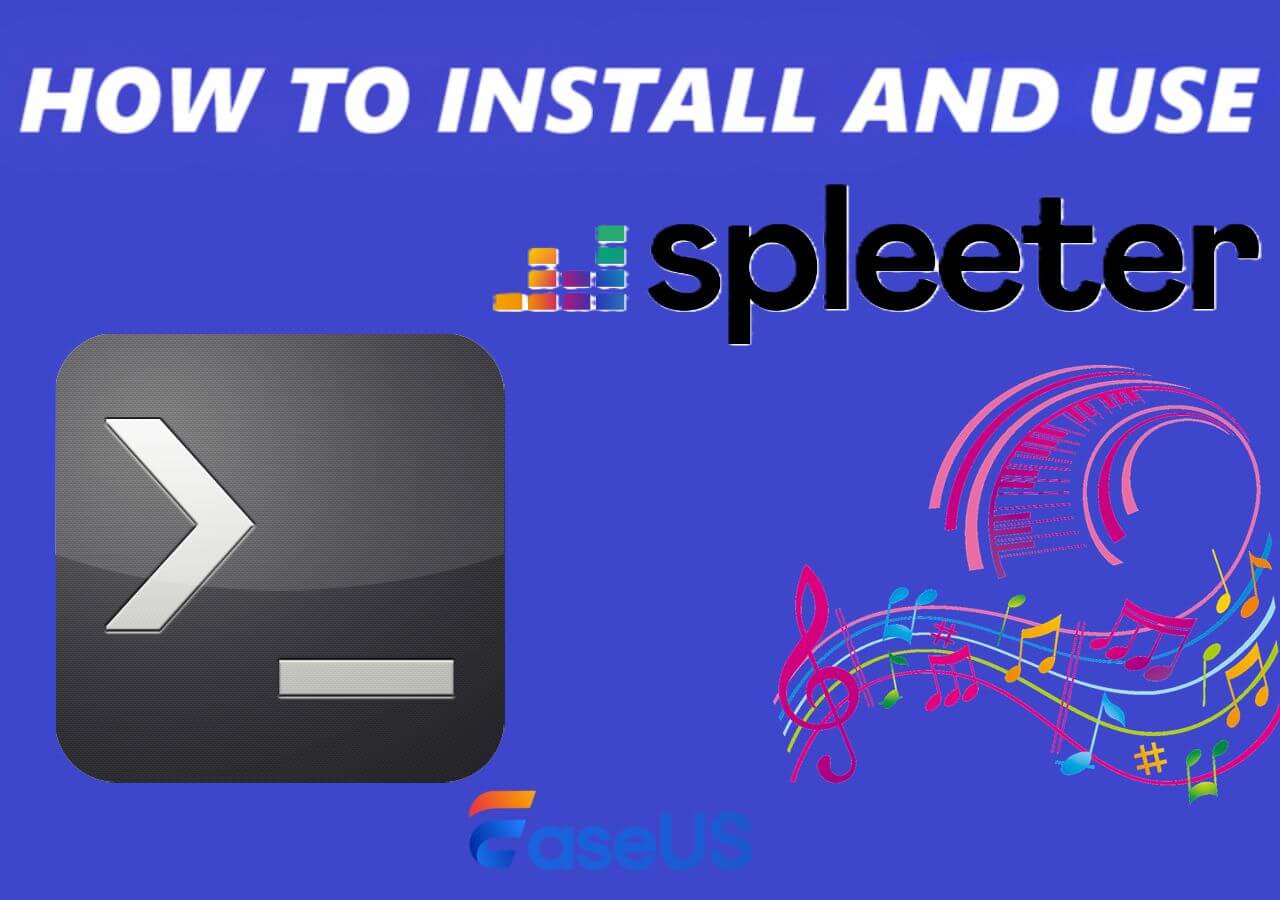-
Jane is an experienced editor for EaseUS focused on tech blog writing. Familiar with all kinds of video editing and screen recording software on the market, she specializes in composing posts about recording and editing videos. All the topics she chooses are aimed at providing more instructive information to users.…Read full bio
-
![]()
Melissa Lee
Melissa Lee is a sophisticated editor for EaseUS in tech blog writing. She is proficient in writing articles related to screen recording, voice changing, and PDF file editing. She also wrote blogs about data recovery, disk partitioning, data backup, etc.…Read full bio -
Jean has been working as a professional website editor for quite a long time. Her articles focus on topics of computer backup, data security tips, data recovery, and disk partitioning. Also, she writes many guides and tutorials on PC hardware & software troubleshooting. She keeps two lovely parrots and likes making vlogs of pets. With experience in video recording and video editing, she starts writing blogs on multimedia topics now.…Read full bio
-
![]()
Gloria
Gloria joined EaseUS in 2022. As a smartphone lover, she stays on top of Android unlocking skills and iOS troubleshooting tips. In addition, she also devotes herself to data recovery and transfer issues.…Read full bio -
![]()
Jerry
"Hi readers, I hope you can read my articles with happiness and enjoy your multimedia world!"…Read full bio -
Larissa has rich experience in writing technical articles and is now a professional editor at EaseUS. She is good at writing articles about multimedia, data recovery, disk cloning, disk partitioning, data backup, and other related knowledge. Her detailed and ultimate guides help users find effective solutions to their problems. She is fond of traveling, reading, and riding in her spare time.…Read full bio
-
![]()
Rel
Rel has always maintained a strong curiosity about the computer field and is committed to the research of the most efficient and practical computer problem solutions.…Read full bio -
![]()
Dawn Tang
Dawn Tang is a seasoned professional with a year-long record of crafting informative Backup & Recovery articles. Currently, she's channeling her expertise into the world of video editing software, embodying adaptability and a passion for mastering new digital domains.…Read full bio -
![]()
Sasha
Sasha is a girl who enjoys researching various electronic products and is dedicated to helping readers solve a wide range of technology-related issues. On EaseUS, she excels at providing readers with concise solutions in audio and video editing.…Read full bio
Content
0 Views |
0 min read
The use of voice memos allows you to transcribe important interviews, capture sudden bursts of inspiration, and even make the process of note-taking faster and more efficient. Do you know how to convert voice memos into text, similar to recording audio? The following article will present detailed operational steps for you.
The table below compares data for these five methods, allowing you to obtain the results intuitively. I hope this is helpful to you.
| Methods | Effectiveness | Difficulty |
|---|---|---|
| EaseUS VideoKit | Use AI to transcribe audio quickly and accurately | Super easy |
| Otter.ai | Provide satisfactory automated transcription service for English speakers | Easy |
| Notta | Transcribe online meetings to text efficiently | Easy |
| Transcribe | Offer readable, quality voice memos to text transcription on iPhone | Easy |
| Dictation | Transcribe voice memos on Mac continuously and smoothly | Easy |
Convert Voice Memo to Text with Transcription Apps
Using transcription tools directly can greatly facilitate users in editing text, achieving seamless transcription operations, and enhancing user experience. The following three tools are the ones we have selected as suitable transcription tools for beginners. Of course, their paid versions also offer more advanced transcription services.
Option 1. With EaseUS VideoKit
The subtitle generation feature of EaseUS VideoKit can transcribe your voice memos into text effectively. It employs advanced AI technology to recognize human voices in audio and continuously improves accuracy using deep learning. As there's no limitation on file size, you can process files of any size, although the processing time for audio depends on the file size. Once the processing is complete, you can directly export the text (txt) file. Of course, you also have the option to embed the subtitle file directly into the audio.
Some Key Features of EaseUS VideoKit:
- Use AI for fast and accurate speech recognition
- Support transcription of over 100 languages
- Allow users to edit SRT files and TXT files
- Support customization of subtitle styles
After learning about these numerous features, do you want to download and try it for free? Click the button below to download securely.
Using EaseUS VideoKit to convert voice memos into text is extremely simple. By following the steps below, you will surely be able to complete the process smoothly.
Step 1. Open EaseUS VideoKit and find the "Subtitle Generator" panel.

Step 2. Click "Choose File" or drag the YouTube video file to the interface.
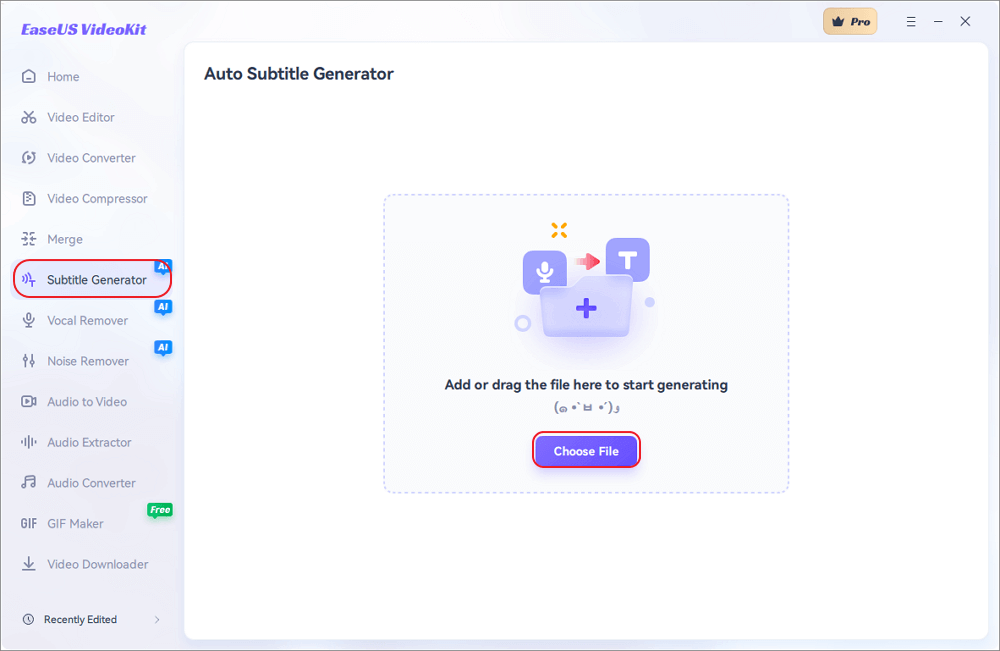
Step 3. Wait for the AI analyzing.
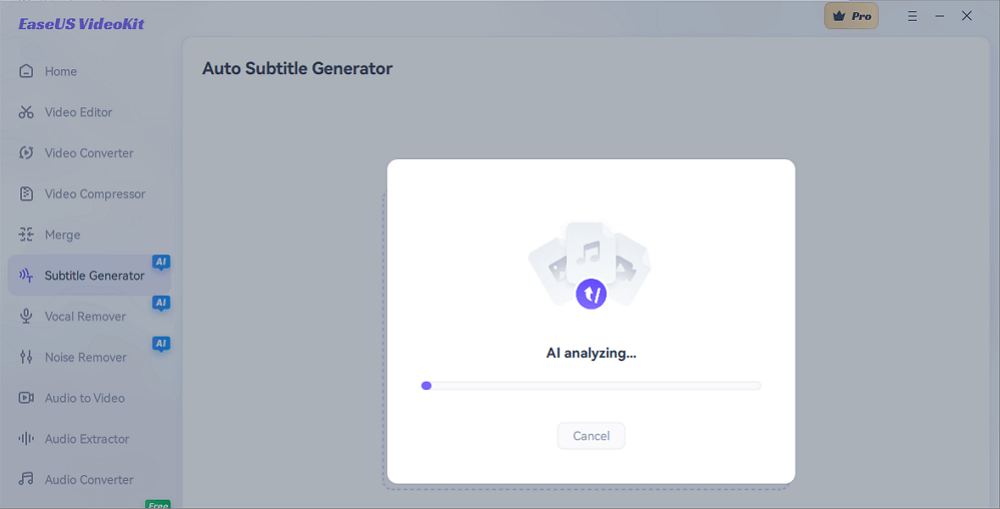
Step 4. Click the "Text" button to change the text, or customize font, background, and position under "Style" menu.
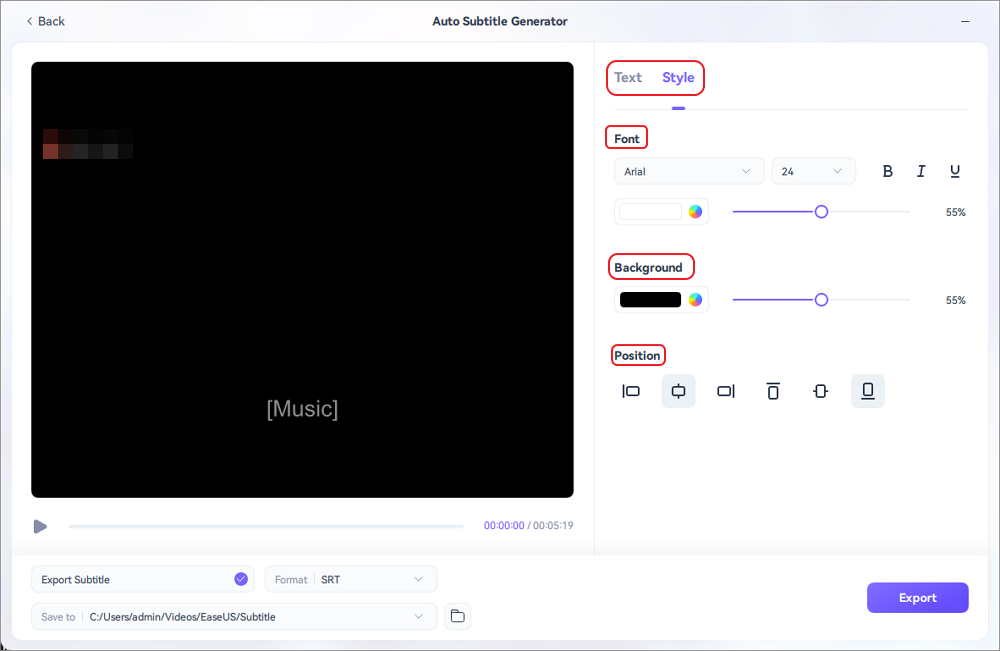
Step 5. Click "Export Subtitle" to select exported subtitle format, "Save to" to change location, and press "Export" to export the video with subtitles.
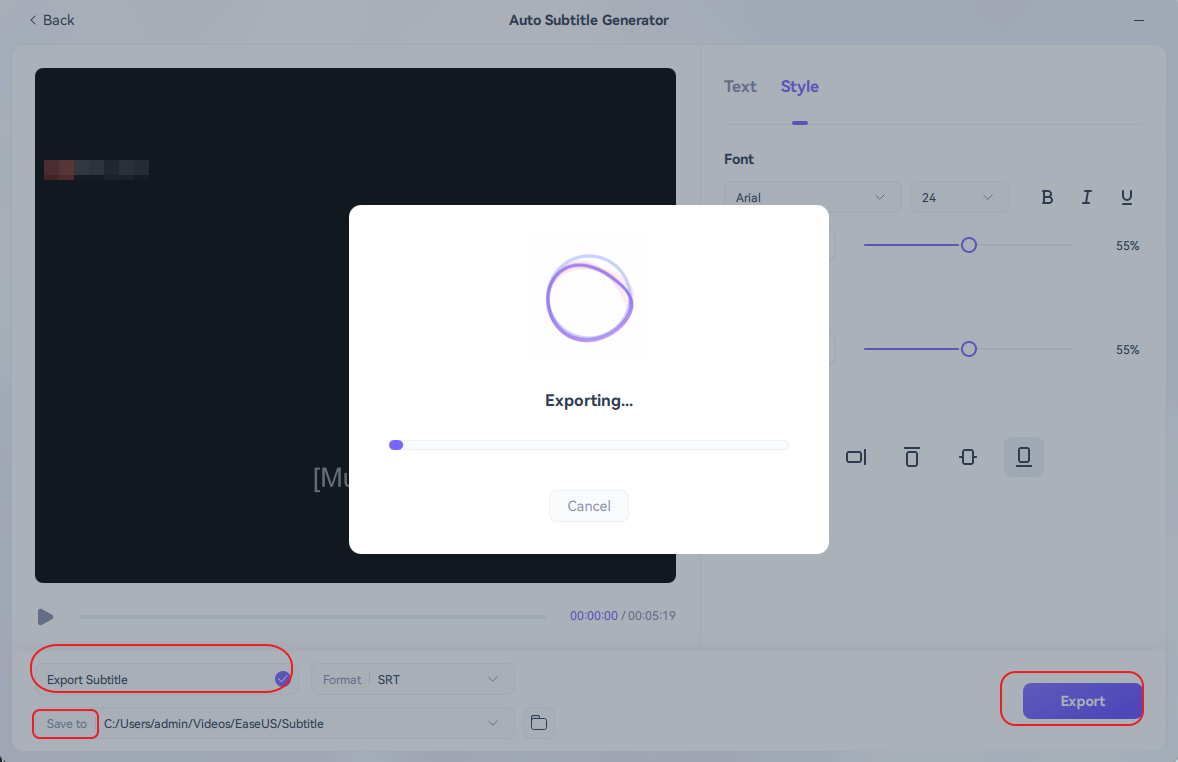
Below is a video tutorial that uses Office 365 to transcribe a voice memo.
- 00:00-00:19 Upload Voice Memos to Google Drive
- 00:20-01:40 Transcribe with Office 365

Option 2. With Otter.ai
Otter.ai is a meeting assistant explicitly designed for recording audio, taking notes, automatically capturing slides, and generating summaries. Users can use it to create notes for important voice conversations such as meetings, interviews, and lectures. However, when meeting participants using different languages, it becomes ineffective. As an excellent free MP3-to-text converter, it is absolutely effortless to convert voice memos into text using Otter.ai.
Let's explore how this process can be accomplished seamlessly. Here is a breakdown of the process to guide you through each stage.
Step 1. Select the "Import" button in the Home screen's upper-left corner.

Step 2. Once you've imported your file, click "Go to Transcript." Allow some time for the system to process the file and transcribe the content.

Step 3. Once the transcript is generated, the text will be displayed in the same window. You can use the "Edit" button to change the text if needed. If you're content with the outcome, click the three dots at the top right corner, then select "Export" to save the transcript as TXT, DOCX, or SRT files.

Option 3. With Notta
Notta can swiftly generate concise summaries of your voice memos online within minutes, thanks to its employment of advanced machine learning algorithms that continually enhance accuracy. This speech-to-text software can transcribe up to 104 languages into text, including English, Spanish, German, French, and more. It also supports cross-device synchronization. No need to worry; it is compatible with many popular audio formats, such as WAV, MP3, M4A, CAF, AIFF, and others.
The steps for transcribing voice memos using Notta are as follows:
Step 1. Click on "Import Files" and select the transcription language, then drag or click "Select documents" to add your voice memos. The conversion will begin immediately.

Step 2. Navigate to the download icon in the home screen's upper-right corner. Click on it to access the option to save the transcription as a TXT file.

Convert Voice Memo to Text on iPhone
On an iPhone, voice memos can be converted to text using a third-party transcription tool, Transcribe. It employs almost-instant artificial intelligence technology to transcribe nearly any video and voice memo. While it might not achieve 100 percent accuracy, it usually captures most content correctly. You might need to make minor edits. Additionally, it is a good answer to how to add subtitles to a downloaded movie.
Here's how you can transform your voice memo into text using the Transcribe app:
Step 1. Open the Voice Memos app and select your recording. Then, tap the "More" button. Tap "Share."
Step 2. Swipe through the list of apps horizontally and pick Transcribe.
Step 3. Select your desired Language and Punctuation Mode. After that, tap on Transcribe.

Once the upload is finished, navigate to the Transcribe app to view your transcribed voice memo.
Transcribe Voice Memo to Text on Mac
We recommend you use Mac's built-in dictation feature to transcribe voice because the process is smoother: When you speak into the microphone, your voice is recorded and sent to Apple to be converted to text. And as it gets more familiar with your voice and the vocabulary you use when you speak, its recognition ability and accuracy will continue to improve.
To effectively utilize Dictation on Mac, please follow these steps for your initial setup, and remember the shortcuts you've configured.
Step 1. Open up "System Preferences," go to "Keyboard," then the "Dictation" section.
Step 2. Enable Dictation and, upon request, agree to the terms of Apple's Dictation service. Pay attention to the provided "Shortcut" (such as "press dictation key" or "press control twice"). You will use this shortcut to activate dictation later.

Step 3. Ensure your Mac's microphone is selected. Then, open TextEdit and create a new document.

Step 4. Activate your dictation shortcut, then start playing the audio file through your Mac speakers. The microphone should pick up the audio and start transcribing it into the open document in real time, then begin playing your audio file through the speakers on your Mac. The microphone should detect the audio and begin transcribing it into the open document.
Conclusion
In the above article, we've outlined five methods for successfully converting voice memos into text and provided detailed usage instructions for each. We hope this information is helpful to you.
If you require batch processing of voice memos and text editing, why not try EaseUS VideoKit?
Click the button below to get your free download now.
Know someone who could use these insights to transcribe their voice memos? Share this post and make their note-taking process a breeze!
FAQs on Converting Voice Memo to Text
You might have a few lingering questions as we delve deeper into understanding the process of converting voice memos to text. Let's explore some common queries in our FAQs section:
1. How do I convert iPhone voice memos to text?
You can use EaseUS VideoKit to convert iPhone voice memos to text.
Step 1. Upload your voice memo file to it.
Step 2. It starts analyzing your file and generates your text.
Step 3. Download your text.
2. How do I convert a voice message to text?
You can use Audio to Text for WhatsApp to convert voice messages to text.
Step 1. Install and open the app on your iOS device.
Step 2. Go to the desired audio message and tap and hold on to it. From the menu, select "Forward."
Step 3. Tap on Audio to Text in the menu.
3. How can I convert my voice recording to text for free?
Both paid, and free options are available for converting voice recordings to text. To do it for free, you can explore online transcription tools like Otter.ai, Transcribe, or Notta, which offer limited usage for free accounts.

